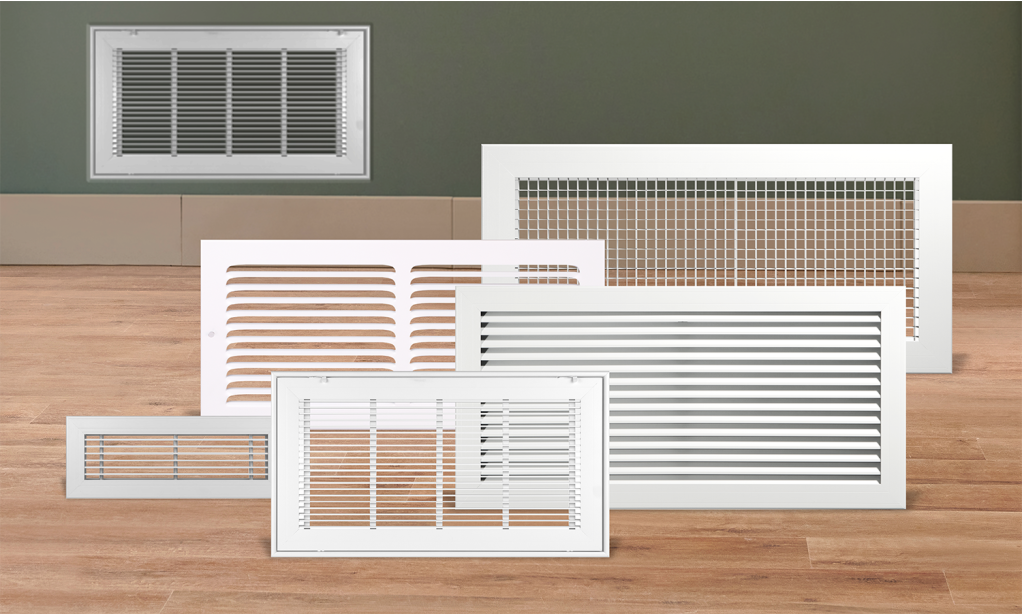HVAC Return Air Grille Importance and Installation
In HVAC systems, much attention is given to supply grilles, registers, and ceiling diffusers, but the role of return air grilles is equally vital. This guide explores return air grilles, their differences from transfer grilles, the importance of proper sizing, and their impact on HVAC systems.
What is a Return Air Grille?
A return air grille is a component of an HVAC system that allows air from a room or space to be pulled back through the HVAC unit for cooling or heating. These grilles are typically installed in walls, ceilings, or floors and allow used or stale air to flow back to the HVAC unit, where it can be filtered, cooled, or heated and then recirculated throughout the building.
What's the Difference Between a Return Air Grille and a Transfer Grille?
A transfer grille facilitates airflow between rooms without directly connecting to the HVAC unit. While both return and transfer grilles manage airflow, return grilles are directly involved in air conditioning processes. In contrast, transfer grilles facilitate air movement from one space to another, helping to balance pressure and temperature across different zones.
Transfer grilles are typically in walls or doors. They are often in buildings with frequently closed doors, like offices or bedrooms. By allowing air to pass through, these grilles prevent rooms from becoming pressurized or stagnant, which can happen without airflow between connected spaces.
However, since they do not filter air or connect to the HVAC system, transfer grilles don't contribute directly to air quality improvement or temperature control the way return air grilles do. They also have some limitations, such as allowing noise to travel between rooms and lacking filtration capabilities.
Why Return Air Grilles Are Important to an HVAC System
Return air grilles significantly impact HVAC system performance. They maintain proper airflow, vital for consistent temperature control and indoor air quality. Properly sized and installed grilles balance air pressure, reduce system strain, and extend the HVAC unit's lifespan. They differ from HVAC supply grilles, which distribute conditioned air into a space, and from transfer grilles, which balance air pressure between different rooms.
Return air grilles:
- Remove stale air and contaminants to contribute to healthier indoor environments, which is particularly important for individuals with allergies or respiratory issues.
- Help to maintain air quality and system efficiency by ensuring that air is continuously cycled through the system.
- Contribute to optimal system performance with proper sizing and placement.
Return air grilles are essential for maintaining a comfortable and energy-efficient indoor environment. They support the HVAC system's ability to manage airflow and air quality effectively.
For a complete overview of an HVAC system, check out our Guide to HVAC Grilles, Registers, and Diffusers.
Why Improperly Sized Grilles Can Cause Issues
Using improperly sized return air grilles can lead to several problems, including increased noise and higher static pressure. If the register grille is too small, the air velocity increases, causing disruptive noises. Additionally, higher static pressure forces the HVAC system to work harder, reducing efficiency and potentially leading to premature wear and tear.
Inadequate sizing also disrupts air distribution, leading to uneven temperatures and increased energy costs. Rooms may become too warm or cool, making the environment uncomfortable and less energy efficient.
How to Correctly Size and Install a Return Air Grille
To correctly size a return air grille, calculate the grille area based on the HVAC system's airflow needs, typically measured in cubic feet per minute (CFM). Consider the face velocity and the free area of the grille to ensure optimal airflow without causing noise or pressure issues. Consult the return air grille’s submittal sheet for additional measurements and sizing information.
A well-sized return grille promotes efficient air distribution and reduces strain on the HVAC system. During installation, place the grille in locations that maximize airflow efficiency and ensure it is unobstructed by furniture or other objects.
Bottom Line
Return air grilles are integral to an HVAC system's effectiveness. Proper sizing and installation optimize air distribution, enhance comfort, and prolong system life, making them essential components of a well-functioning HVAC system. HVAC professionals can help homeowners and businesses select the best return air vents for their residential or commercial space. Explore RectorSeal’s high-quality return air grilles collection and other GRD products from TRUaire and Shoemaker.

